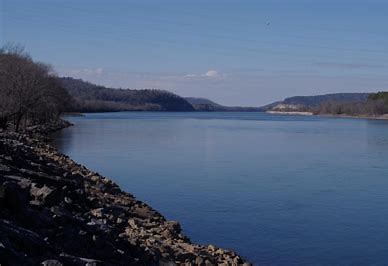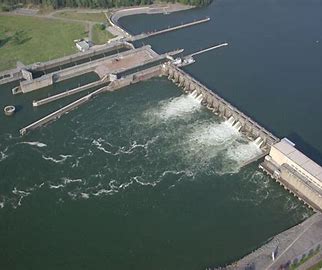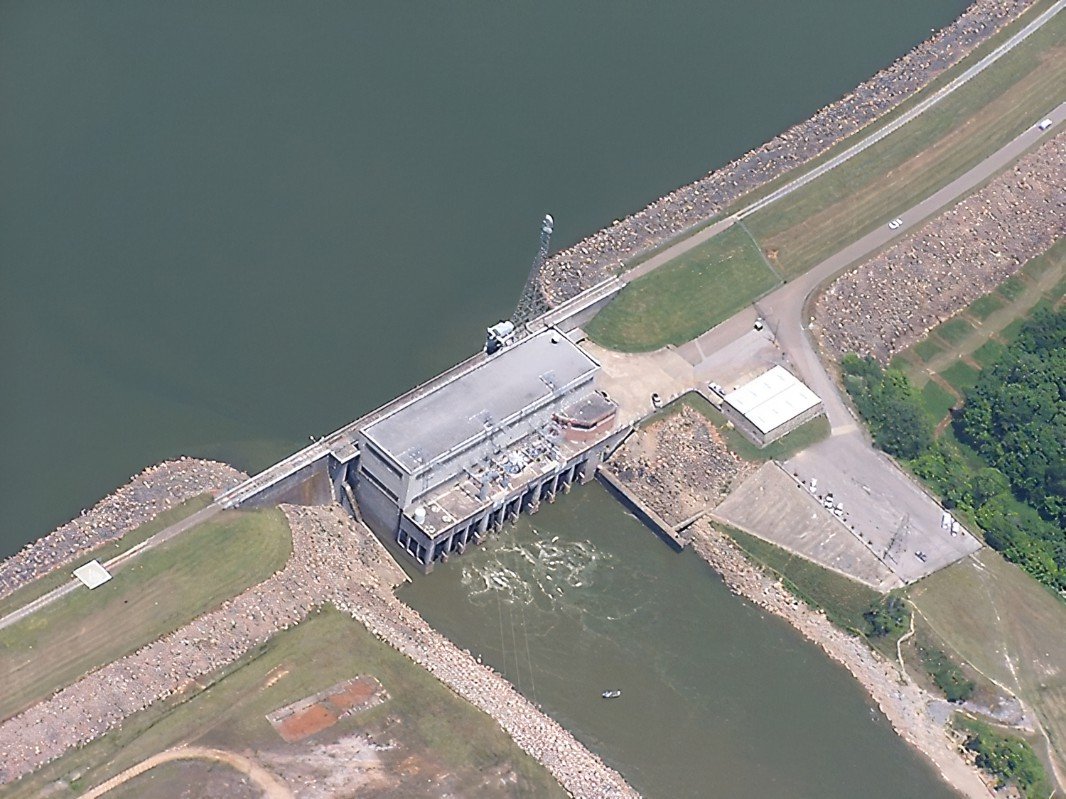The Wilson Dam and Reservoir
The Wilson Dam and Reservoir is one of the most unique of all the structures in the State for one very simple reason; the reason for being built in the first place.
The actual creation of this very unique Dam was spurred by World War I, and the possibility of an America entry into this world-wide conflict.
Officials of the government feared that the nations supply of nitrates could be cut off by the German Navy.
Nitrates is an essential ingredient in the production of explosives, and the United States was critically short of it.
During this time period, the United States relied on guano that was imported from Chile, as the sole source of this critical military resource.
Guano is actually bird or bat dung.
In response to the very dangerous situation, the national Defense Act of 1916 was passed, and had one major goal; create nitrate plants.
However, to create these critical nitrate plants, you need something to power them; a hydroelectric facility powered by a dam.
Numerous federal studies by Federal engineers selected the Muscle Shoals area, for the construction site.
It showed the most potential for the development of waterpower east of the Rocky Mountains, and the Wilson Dam was officially born.
The Location of Wilson Dam and Reservoir
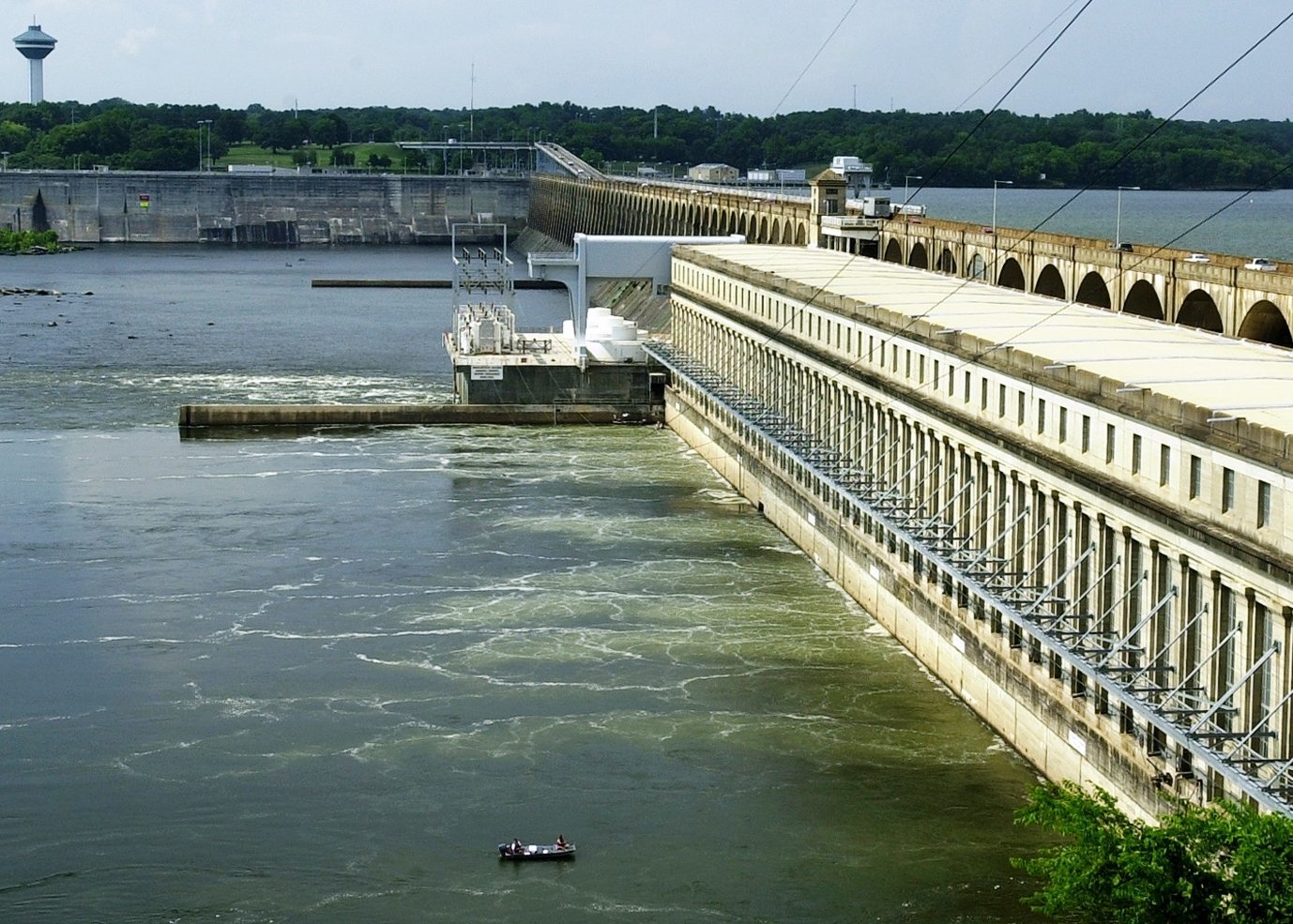 Wilson Dam and Reservoir
Wilson Dam and ReservoirThe Wilson Dam and the reservoir it would create, would become one of the 29 conventional hydroelectric Dams in the area.
These Dams would latter provide flood control, a lot more navigation through the area, as well as electrical power for the citizens.
However, it would also supply recreation as well as water supply, for the seven-state Tennessee Valley region.
Wilson Dam is located on the Tennessee River, between Colbert and Lauderdale counties, near Muscle Shoals.
And again, it was built originally for the sole purpose of providing hydroelectric power for the production of nitrates during W.W. I.
The Results of the Wilson Dam and Reservoir
Once the Wison Dam was built and the reservoir was made, it made the river much more navigable.
It also provided energy for much needed regional development, as well as created several recreational activities.
There is also one other very interesting fact about the Wilson Dam; it is the largest conventional hydroelectric power-generating facility in the TVA system.
This magnificent structure is a concrete gravity dam, which means it holds back the water entirely by its own weight, making it extremely strong.
It is built on a blue limestone rock foundation, with a length of over 4500 feet, is 137 feet high, and has a width of 160 feet.
The Building of the Wilson Dam and Reservoir
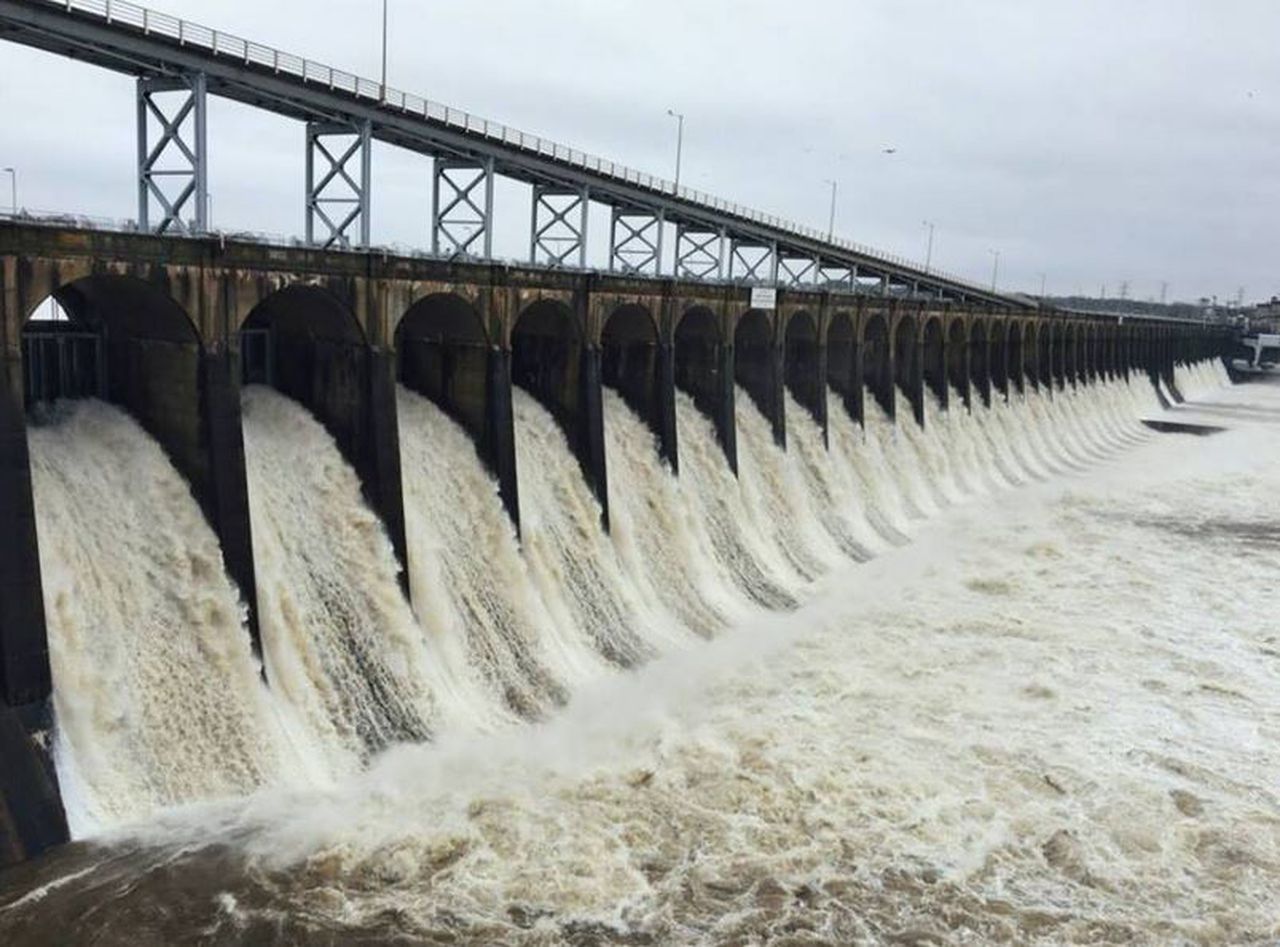 The Power of Wilson Dam
The Power of Wilson DamWork on the Wilson Dam began between the years 1918 and 1924, by the U.S. Army Corp of Engineers, and worked under the supervision of the United States War department.
This was necessary, again, because of the necessity to produce nitrate plants as quickly as possible.
It was a huge project for its time.
Here Are Some of the Facts About its Building Process
- It employed over 18,00 workers.
- The construction site had 1,700 temporary buildings.
- It had 236 permanent buildings.
- It had 185 residential units.
- It had 23 mess halls.
- It served 24,000 meals a day.
- It had a school with about 850 students.
- It had an 85-bed hospital.
- More than 800 bricklayers were working at one time.
More Interesting Facts About the Wilson Dam and Reservoir
- The Dam is 137 feet high.
- It stretches over 4,500 feet across the Tennessee River
- It has 21 generating units with a summer net dependable capacity of 653 megawatts.
- Wilson Reservoir provides 166 miles of shoreline.
- It has 15,500 acres of water surface for recreation.
- It has a flood-storage capacity of over 50,000-acre feet.
- It has over 165 miles of sewer and service pipelines.
- It has 685 miles of electrical cable.
- On average, about 3,700 vessels pass through the Wilson’s locks each year.
On top of all of that, the main lock at the Wilson Dam, is 110-600 feet.
It has a maximum lift of 100 feet, making it the highest single lift lock east of the Rockies.
It also has an auxiliary lock that has two 60-by-300-foot chambers, that operate in tandem.
The origins of this magnificent structure, lie in the shallow and often very turbulent pockets of rushing waters.
These waters are the mark of the famous Muscle Shoals section, of the Tennessee River.
At the time, this structure was such an amazing engineering feat, in 1925, author Willima Bejamin West dubbed it “America’s Greatest Dam.”
There is Still More About the Wilson Dam and Reservoir
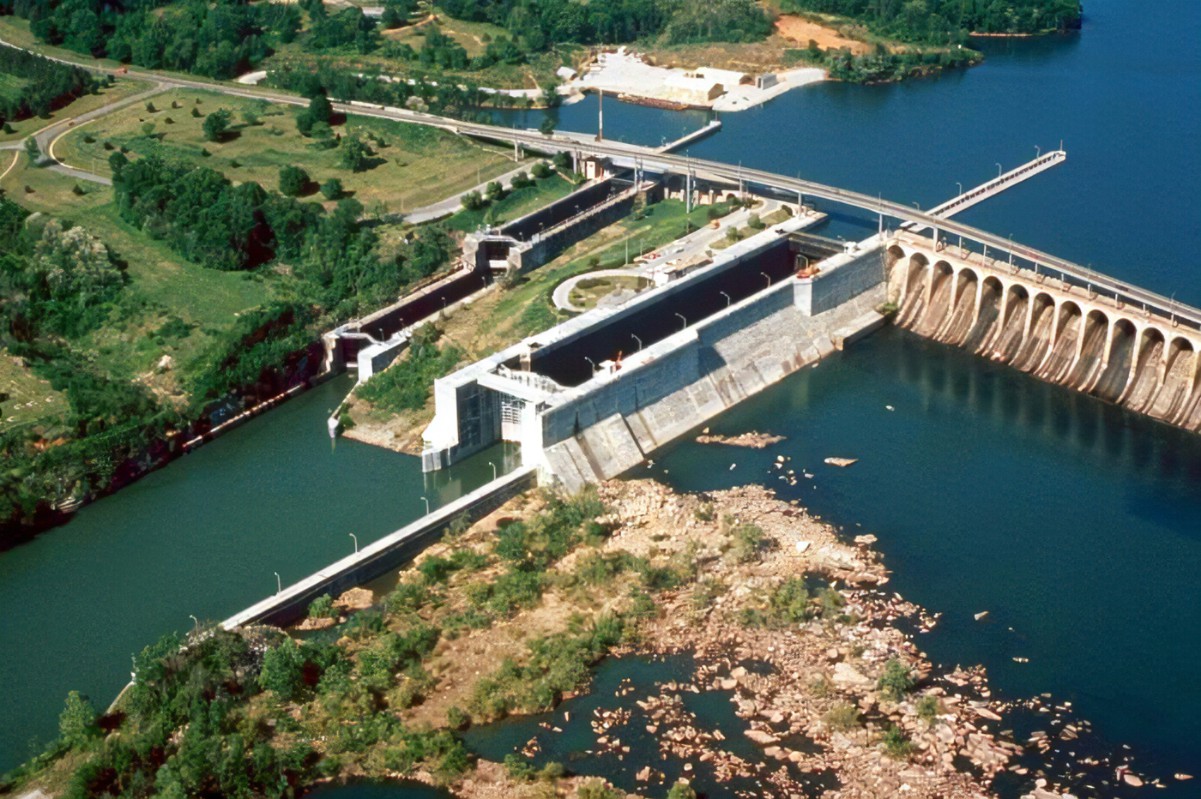 Overhead View of Wilson Dam
Overhead View of Wilson DamThis amazing structure was still not completed when WWI ended, and thus did not contribute to its outcome as planned.
When it was finished in 1924, it only had about 40 percent of its electric generating capacity finished.
At this time, the navigation facilities at Wilson Dam consisted of a double-lift lock, whose tandem chambers had a combined maximum lift of only 90 feet.
These locks worked with the existing Florence Canal and Lock Dam No. 1.
With the competition of the new lacks and dam, the once treacherous Shoals were made much more navigable.
Once this happened, steamboats and barges were finally able to travel this stretch of the river, unimpeded and much safer.
It finally started to produce electricity generation in September of 1925, and the total cost of the Dam was a whopping 130 million—huge for its time.
For the next couple of years, the federal officials running the dam struggled with its future.
The plant’s hydroelectric capacity led them to shift the purpose of this wonder from national defense, to domestic needs.
About this time, Wilson Dam’s potential attracted the attention of Henry Ford, who wanted to purchase the entire complex to produce cars.
Numerous Senators and delegates around the Mid-West and South opposed the idea, and the controversy continued until one man stopped it all.
Once the Great Depression hit, President Franklin Delano Roosevelt stepped in.
No longer were national priorities the concern, but conserving the national resources and creating jobs became the priority.
When the President inspected Muscle Shoals in 1933, he found that it was twice as large as he ever imagined.
He also stated he wanted this facility for the people, not companies.
He wanted it to work for the good of the region, its people, as well as the future generations.
As part of the New Deal program to revitalize the economy, he signed a bill creating the Tennessee Valley Authority.
The new founded TVA converted long-idle nitrate plants to fertilizer research and production.
Because of this, the Wilson Dam and Reservoir became the cornerstone of the TVA’s overall plan, for the development of the entire Tennessee River.
Today the Wison Reservoir, with is massive shoreline and water surface, provides numerous recreation opportunities.
This includes boating and fishing, which allowed for the development of numerous marinas as well as food and lodging services.
The TVA still operates the Wison-Dam Lower Rockpile Campground, which has 23 campsites, restrooms, as well as picnic facilities by reservation.
The Wilson Dam and Reservoir is truly one of the State of Alabama wonders for you and your family to visit.
References
Wilson Dam and Reservoir - Encyclopedia of Alabama

Alabama Gift Store
Numerous Items for You and Your Family to Enjoy
See it here at the Gift Store
Copyright 2019-2023 Alabamabackroads.com
All Rights Reserved
